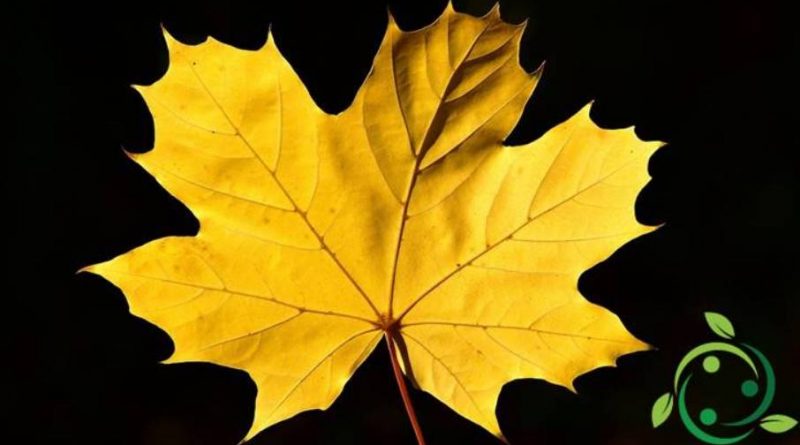Xanthophyll
Xanthophyll
Xanthophyll is a yellow pigment, very common in plants, found especially in chloroplasts, and is therefore particularly abundant in the leaves. Xanthophyll belongs to the carotinoid group and is probably a derivative of carotine by oxidation. The term xanthophyll comes from the Greek ξανθός (xanthos), which means yellow and φύλλα (fylla), leaf.
The term xanthophyll was given in 1873 by Berzelius to the soluble pigment in ethanol extracted from the autumn leaves. The amount of xanthophyll in the leaves varies between 0.7 and 1.2 gr / kg, while the ratio between carotine and xanthophyll is about 0.6.
When, in the autumn, we approach the end of the photosynthetic activity of the leaves, xanthophyll becomes absolutely prevalent, both free and combined with fatty acids in the state of ester.
In addition to chloroplasts, xanthophyll is also found in leucoplasts and in the petals of several flowers, especially of Composite; many isomers are known not only in the plant kingdom, but also in the animal kingdom, as for example. in hen’s egg yolk (lutein).
The origin of xanthophyll is to be considered common with that of carotene and chlorophyll phytol; they are all compounds that, probably, come from the nucleus of the isoprene and have relation with other lipoids of the plants and with the terpenes. Xanthophyll has a characteristic absorption spectrum, and some reactions, such as that of bromine in chloroform solution and that with ferric chloride.
Regarding the role and function of xanthophyll there are still some aspects to be clarified. It is thought, however, that the genetic relationships between carotine and xanthophyll, in relation to oxygen, can attribute to this pair of compounds an important function in the metabolism of oxygen, both in the respiratory phase and in that of oxygen release that comes from the splitting of carbon dioxide into chlorophyll photosynthesis.
To the genus of xanthophyll belong other substances present in nature; these are: lutein, criptoxanthin, zeaxanthin (contained in corn), violaxanthin and rubixanthin. They are found in the green leaves of all plants, in corn, in alfalfa, in many other plants and also in animals (crustaceans and birds). It should be noted that some xanthophylls, such as capsanthin and capsorubin contained in paprika, are traditionally considered derivatives of carotene and not of xanthophyll. From the commercial point of view the main source of xanthophylls is the flowers of the Tagetes erecta.
Xanthophylls are used as dyes for food products; their use is permitted because, in addition to being of natural origin, prolonged use in human nutrition has never caused harmful reactions.
Xanthophylls are also used in cosmetics both as dyes and for their biochemical properties. Xanthophylls are widely used in the food industry for bakery products, ice creams, puddings, desserts, sauces, mayonnaise, candied fruit, drinks and diet products, snacks.
Also in the zootechnical field, substances belonging to the xanthophyll group are used, such as lutein and zeaxanthin, which unlike non-oxygenated carotenoids, such as β-carotene, are metabolized by the animal and deposited either in the subcutaneous fat or in the yolk of the egg, to which they impart the characteristic yellow color.
With regard to the regulatory aspects, the current Italian food law (D.M. 27 February 1996 No. 209) lists xanthophylls under the heading E 161.
We suggest this purchase
Warning: The information reported is not medical advice and may not be accurate. The contents are for illustrative purposes only and do not replace medical advice.

